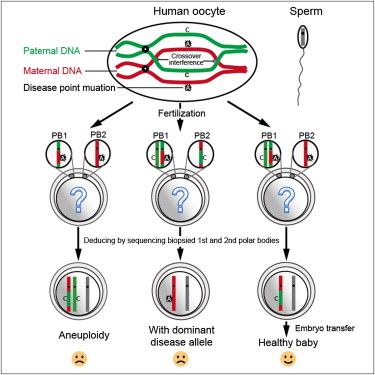New Method of Genome Analysis May Mean More Healthy IVF Babies
Whole genome sequencing of single egg cells for IVF to detect genetic defects could increase the chances of a healthy child if the results hold up in clinical trials.
A new method to detect genetic defects in egg cells that are intended for in vitro fertilization (IVF) could increase chances for a healthy child if the results hold up in clinical trials, researchers report in the journal Cell.

By using whole-genome sequencing of individual egg cells, the researchers identified a method that detects chromosomal abnormalities and DNA sequence variations that are typically associated with genetic disorders.
"In this way, we kill two birds with one stone: one set of deep sequencing analysis to avoid two types of genetic problems," said study author Jie Qiao of Third Hospital, Peking University, in a statement. "Theoretically, if this works perfectly, we will be able to double the success rate of test tube baby technology from 30% to 60% or even more."
The researchers followed a similar approach that they had used in developing whole genome sequencing methods to simultaneously detect both types of defects in single human sperm cells. But this work is the first to apply the approach to egg cells.
The egg cell approach involves a method for sequencing the entire genome of polar bodies-cells that arise as a byproduct of egg cell division and often die later on. Since polar bodies are dispensable for human embryonic development, they can be safely removed without harming the embryo, the researchers said.
Having identified the method, the researchers are now developing a clinical trial to test the method and to determine whether it has a positive impact on the success rate of IVF.
Pertinent Points:
- Researchers are exploring a way to use whole genome sequencing of individual egg cells intended for IVF to detect chromosomal abnormalities and DNA sequence variations that are typically associated with genetic disorders.
- Clinical trials are being established to test the effectiveness of the new method, but the researchers believe that if the method holds up, it could significantly improve the chances of a healthy baby from IVF.
References:
Reference
Hou Y, Fan W, Yan L, et al. Genome analysis of single human oocytes.
Cell.
2013;155:1492-1506.
S1E4: Dr. Kristina Adams-Waldorf: Pandemics, pathogens and perseverance
July 16th 2020This episode of Pap Talk by Contemporary OB/GYN features an interview with Dr. Kristina Adams-Waldorf, Professor in the Department of Obstetrics and Gynecology and Adjunct Professor in Global Health at the University of Washington (UW) School of Medicine in Seattle.
Listen
